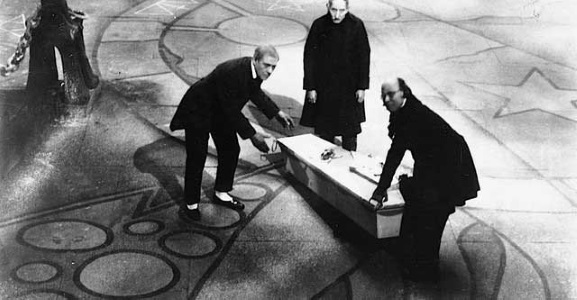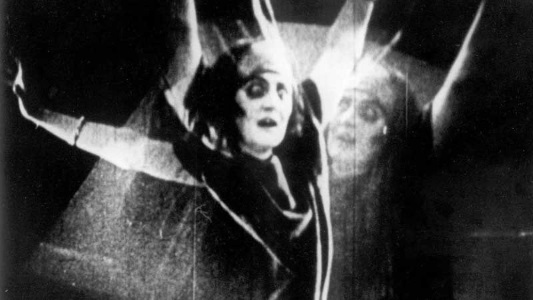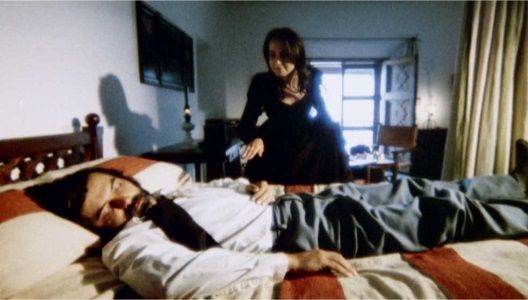The Fall of the House of Usher - Five Films
The Fall of the House of Usher (1928)
– 7.0
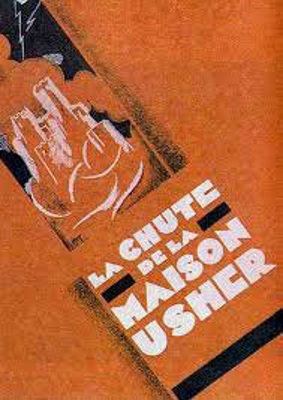
What do Jerry Lewis and Edgar Allan Poe
have in common? France respected and honored them both much more than their
home country did. Lewis I don't get, but Poe deserves every accolade he got.
Back when he was alive, his works were translated into French and were very
popular. He had of course placed his detective Auguste Dupin in Paris though
he had never been. Literary critics in France applauded him while back home
much of his prose and poetry was generally ignored. Most of his salary came
from his work as a critic and he was constantly in financial trouble. In
those days there was no international copyright law, so likely he received
nothing for his work from France. His fame came later after his death and
with film in the 1900s, his work was constantly used as a basis for hundreds
of films and TV. Much of it using his title and then going off in other directions.
Short stories and poems were generally what these films were based on and
the directors had little choice but to fill them with their own ideas.
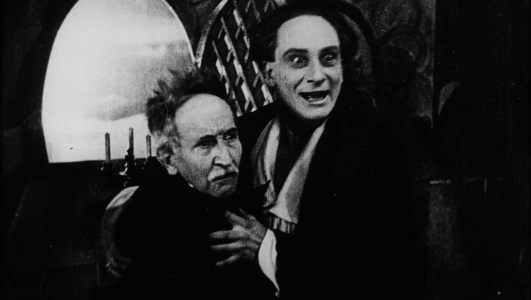
This film from director Jean Epstein changes
a few things around from the short story - his sister to his wife thus taking
away any intonations of incest - and adds a plot device that seems borrowed
from Oscar Wilde's Dorian Gray. Still, the gist of the story is here. But
in a way the story is a side-issue - it is the style from Epstein that will
grab your focus. The film is filled with melancholy and madness enhanced
with the use of montage, startling images, superimpositions, close-ups and
quick editing. It is experimental in the way only silent films could do back
then when with the lack of dialogue, they had to rely on imagery.
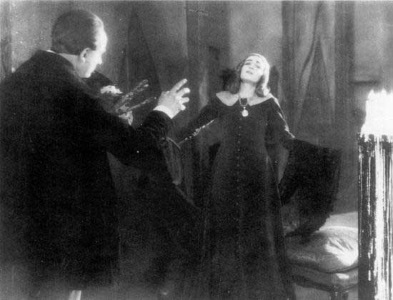
As in the book, an old friend by invitation
visits the House of Usher, a huge, dilapidated mansion set in the isolated
country sparse with vegetation or charm. His friend Rodrick (Jean Debucourt)
who he has not seen for years wrote to him of his malady of depression and
needed company. The inside of the house is no more welcoming than the outside
with cavernous yet smothering rooms with only dismay in the atmosphere. Rodrick
explains that his wife Madeline (Marguerite Gance - wife of Abel Gance who
has a cameo in the beginning as one of the men in the inn) is ill - fatigued
and morose. Rodrick paints her but the painting seems to suck her soul out.
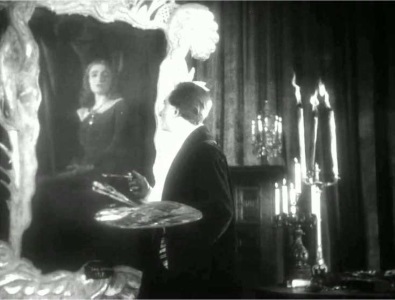
She dies - and the funeral procession to
put her casket in the family crypt across a lake is rather brilliant - all
montage practically including two frogs watching the proceedings. The husband
asks that her coffin not be nailed but they do so anyways. He has a feeling
that she is not really dead. Poe's The Premature Burial is all about the
fear of being buried while still alive. One night dark and dreary, the friend
is reading to Rodrick from the book Mad Trist, which is in fact an invention
of Poe. And suddenly as he reads the sounds of story are echoed by sounds
in the house. The ending also differs from the book - which seems a misstep
- in the book the friend is so frightened and runs out of the House never
to return. This is up on YouTube but much foggier than you would like. I
would love to see this in a pristine copy. 63 minutes.
The Fall of the House of Usher (1928) – NR
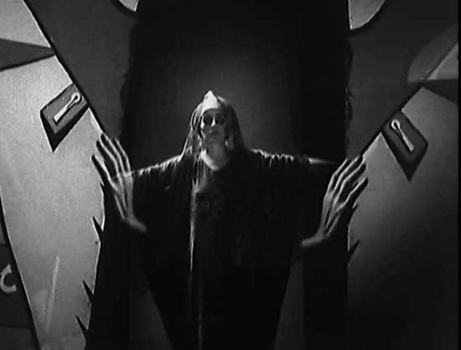
In 1928 there were two films made based
on the Edgar Allen Poe short story. In France there was a feature film and
in America there was a 13-minute short film. This is the American one and
it is truly wonderful - no intertitles, no sense unless you have read the
story - a barrage of dream like images that are expressionistic and avant-garde.
You don't expect this from an American short film but the director James
Sibley Watson was first a doctor before becoming a leading advocate of modernist
literature and then experimental films. In a way it captures the opium hallucinative
styled narrative of Poe's writing in the story. It is up on YouTube as is
the French film.
The Fall of the House of Usher (1950) – 6.0
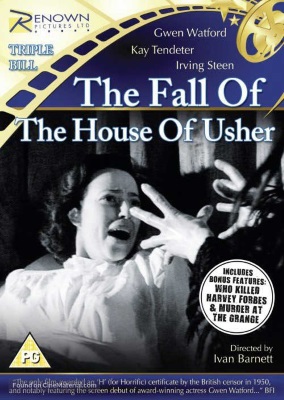
This is a fairly obscure British version
of the Edgar Allan Poe short story. It was an independent production, directed
by Ivan Barnett who only has a few other credits to his name. But that is
more than the rest of the cast do. For all but one actor, this is their one
and only claim to fame. I imagine they were part of some amateur theatrical
group. This was the debut though for Gwen Watford who plays the sister and
she was to go on to a lengthy career. I am rather fond of her for her role
as Dolly Bantry, the friend of Miss Marple in the Joan Hickson films. Clearly
a very small budget but it isn't bad at all. Very gothic with terrific black
and white photography from the director.
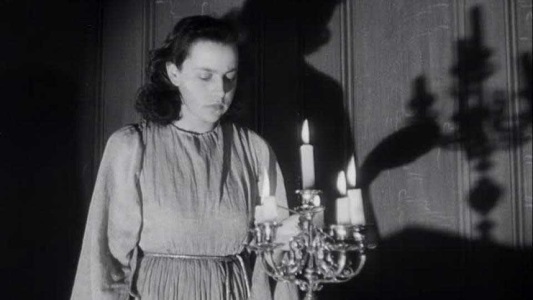
He manages to squeeze in a gloomy manor,
candles burning, wind blowing, animals howling, rain pouring, clocks ticking
and dark shadowy staircases leading to the turret. Nicely done. I would like
to say the same of the acting to be kind, but I can't. Most of it is wooden
or overdone. It runs 70-minutes and upon release it was given an H rating
by the British Board of Certificates - meaning horrific and you have to be
16 or older to gain entrance. That probably was a boost for the film as it
did ok at the box office.
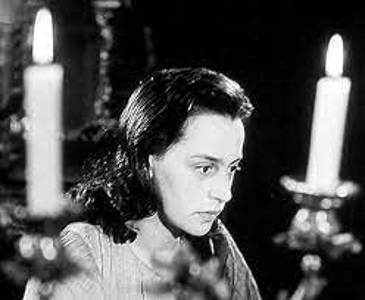
The film takes an interesting angle on the
story - sticking to it, then not, then again, then not. It begins in modern
times in a men's club as one man reads the Poe story out loud to a few other
man - and then the cinematic story takes over. A friend comes to stay with
Roderick of the House of Usher. Melancholia has set in. Even more so with
his sister who plays the piano and drinks milk before going to bed. The focus
on the glass of milk makes you wonder if she is being poisoned by the house
doctor who warns the guest to leave immediately because of the unhappiness
in the house. Then the guest goes to sleep.
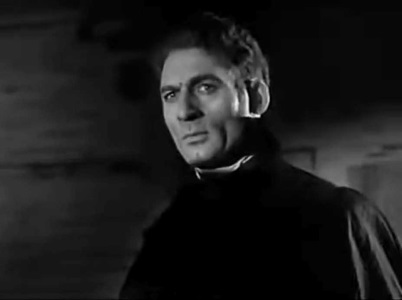
And a new story is told from where I cannot
say. It is weird and kind of good. The doctor tells Rodrick that there is
a curse on the House. Placed there by the lover of his mother years before.
His father had a torture chamber set in a temple and discovered the two lovers
inside one day. He cut the man's head off and the only way to get rid of
the curse is to burn the head. The two of them along with a servant go to
do this - but the damn mother is still there looking like a horrible witch
with enormous strength and protecting the head which has been mounted. An
animal trap catches the servant and then she strangles him. What the hell
is going on. This should have been the whole movie. The sister has followed
them and goes back the next night only to fight with the woman who is her
mother. Then back to Poe. And a great scene of the now dead sister pushing
her way out of the nailed casket. With some real money and better actors,
this would have been a terrific ahead of its time horror film. It has actually
been shown on TMC.
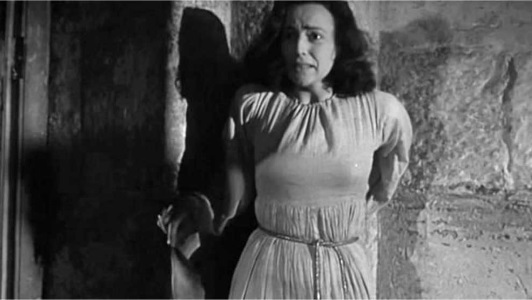
House of Usher
(1960) - 8.0
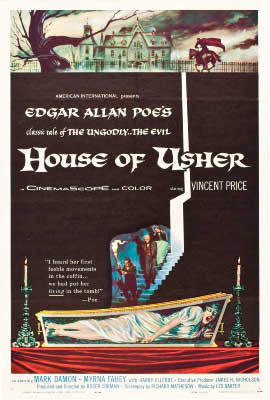
This is the first film in what came to be
called the Poe Cycle of eight from Roger Corman. They finally got it right.
There have been a few film versions of the Poe short-story over the years.
It has captured the public's imagination for well over a hundred years. It
is a brilliant read that is unnerving. Raw insanity. There is even a recent
mini-series that looks to have taken many liberties. The two silent ones
were quite good but they were silent. You need the vocal madness of Poe to
seep into you like a rat gnawing on your toes. Corman and his scriptwriter
Richard Matheson make one big change from the story that initially threw
me off, but as the film progresses it adds additional horror and pathos.
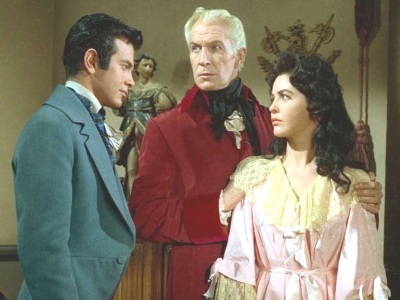
Corman had been directing and producing
low-budget black and white films since the mid-50s. Lots of them. Often made
in a week or two with at the time unknown actors and directors - many who
became famous later on. He would latch on to whatever the latest trend was
- horror, teenagers, organized crime, sci-fi, giant monsters - either direct
it himself or find someone who would work cheap for the experience. But in
1959 he approached AIP who had put the money up for many of his films - and
told them he wanted a bigger budget and to shoot the film in color. They
agreed. Corman still kept it to two weeks of shooting - but the color is
eye-catching-candy, the design from Daniel Haller who performed the same
duties on all the Poe films are magnificent and the cinematography by his
regular Floyd Crosby brings out all the deep colors. Though he ended up doing
many Corman films, Floyd had also been the cinematographer on High Noon.
He also had a son, named David.
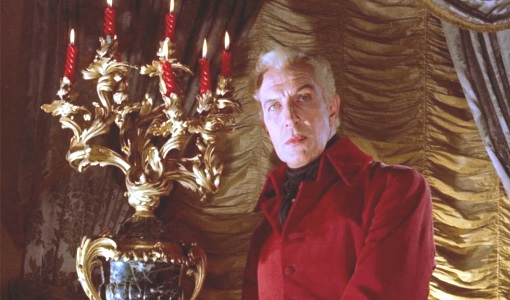
Corman saved money as well with only a cast
of four. But one was Vincent Price. Could anyone else have done Roderick
Usher as Price does. Insanity shimmering with every word and gesture but
always kept on a leash. Price had been a fairly serious actor for much
of his early career but beginning with The Fly in 1958 he began to make his
shift to being a horror icon. He followed up The Fly with The Bat and the
creeping The Tingler before Corman got him as Usher. His commanding perfectly
enunciated voice was a match for Poe and the many horror films that were
to come his way. Price was to star in all but one (Premature Burial) of the
Poe Cycle. The 1960s were to prove fertile ground for him.
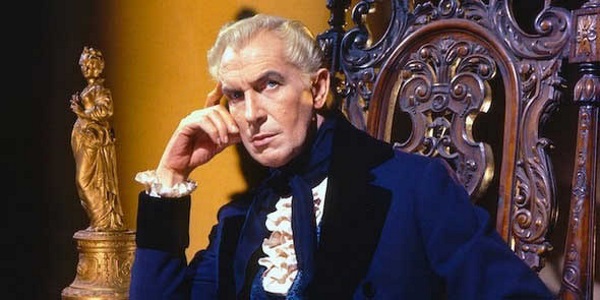
It begins as does the book with a lone traveler
on horse coming to the House of Usher. The isolated ground around him is
desolate and stunted - as are the people inside - the knee-high menacing
fog is kept at bay from entering the grim looking House by the thick stone
walls of the imposing Gothic house that is crumbling and apparently only
slumbering for the time. It is a world with no joy. The man is Winthrop (Mark
Damon) who has come to see his finance Madeline (Myrna Fahey), the sister
of Roderick. He had known her in Boston. In the book, the man is an old friend
of Roderick and has been invited to stay with him. The sister is an ephemeral
character barely seen as she floats by - till the end. Here she takes on
a much larger role. The inside of the house still shows its once upon a time
glamour and wealth with lush colors, rugs and furniture. But it is a dying
house. The servant Bristol (Harry Ellerbe) asks him to take his boots off
and brings him to see the Master of the House. Usher in a bright crimson
waist coat to offset the vibrant blue one that Winthrop wears immediately
demands that he leave the house.
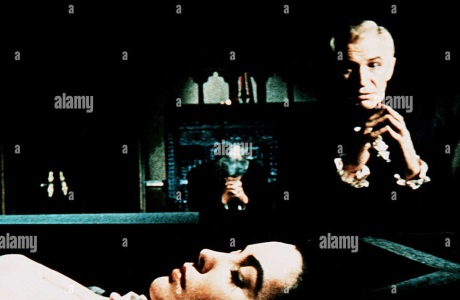
Usher intimates that the house is evil and
the Usher's are cursed. 'We all suffer from a morbid acuteness of the senses".
Any loud noise, rough touch, or food with any taste is insufferable. "I can
hear the claws of a rat scratching in the walls". Leave he admonishes him
but being a man in love he of course does not heed the warning. He pleads
with Madeline to leave with him and she wants to but cannot. The House is
holding her prisoner. She takes him on a fun tour of the crypt where all
the Ushers are stored. Her coffin is already prepared. Usher shows him all
the ghastly portraits (by Burt Schoenberg) of his ancestors and recounts
their crimes and madness. Usher's concern for his sister seems to go beyond
brotherly love. But the madness has just begun in the House of Usher. Made
for $300,000 it made a relative pile of money and so Corman got the go-ahead
to make the next one - The Pit and the Pendulum. With a minimum of money
but great craftsman and Price, this became a classic. How it holds up to
a new generation of horror fans, I don't know - very little gore to speak
of - no nudity or sex - just a film filled with atmosphere and dread.
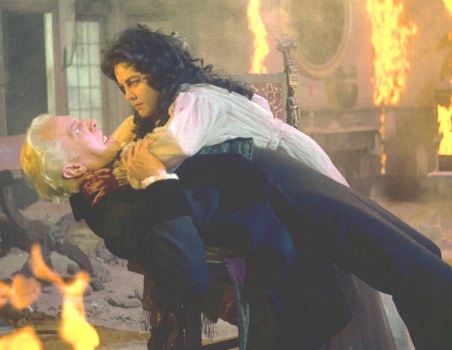
Revenge in the
House of Usher (1983) – 3.0
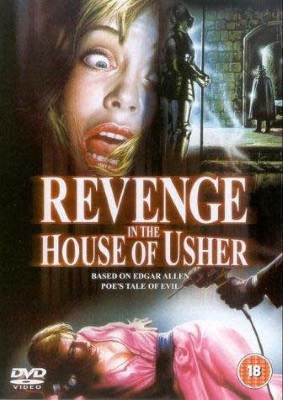
Aka - Neurosis
Dubbed
I have no one to blame but myself. I came
to this like the visitor in the Edgar Allan Poe story, Fall of the House
of Usher, with a sense of dread and regret. One of these days perhaps I will
watch a Jess Franco film and think to myself that was pretty good, but my
light (compared to his output) selections so far have all been fairly dreary,
tedious and simply poor film making if things like continuity, logic and
making sense mean anything. My reason for this visitation is that I have
been trying to watch the different film versions based on Poe's story and
that led me here. I did some reading on it first and everything I read was
a horror story about how bad it is. Hard to find a good word about it and
you won't find one in this review. Its origin story is strange enough. From
what I gather, it was a mix and match exercise in which Franco took a few
of his failures and made a new film and called it Revenge in the House of
Usher.
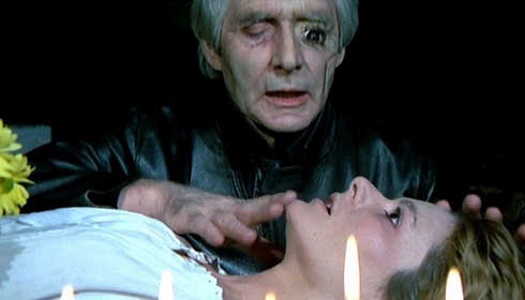
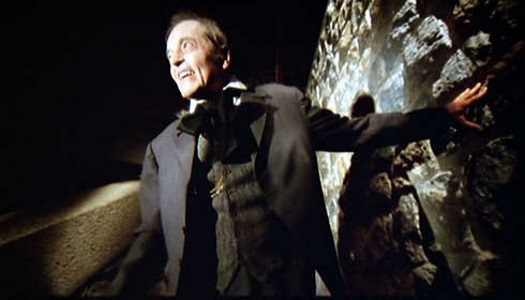
In this film a guest - Alan Harker - was
a previous student of Usher and comes to stay with him at his invite and
finds Usher (Howard Vernon who was the doctor in The Awful Dr. Orloff) worse
for wear. A kind way of saying nuts. And that is the only part that has anything
to do with Poe's story. The rest is nonsensical gibberish that wanders around
like a lost hungry dog. Harker finds three women jailed up who tell him Usher
is a monster taking their blood. He faints and the next day thinks it was
a nightmare. No, the nightmare is you got yourself stuck in this film. The
best thing about the film is its location. It was shot in the Castle of Santa
Catalina which is this huge stone ancient castle with steep stairs and winding
hallways. It has been converted into a pardor - a hotel. That would be a
very cool stay. I will take the prison cell.





